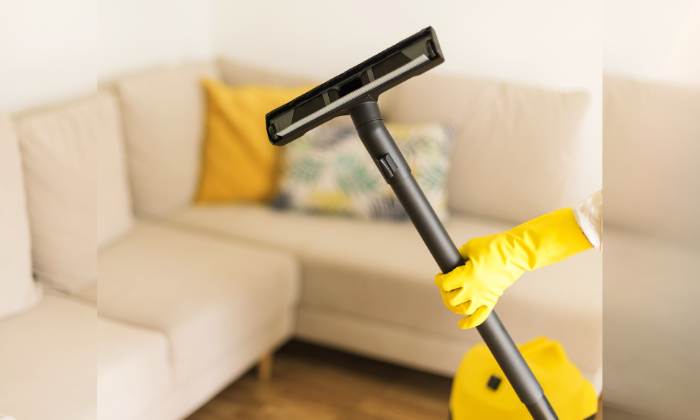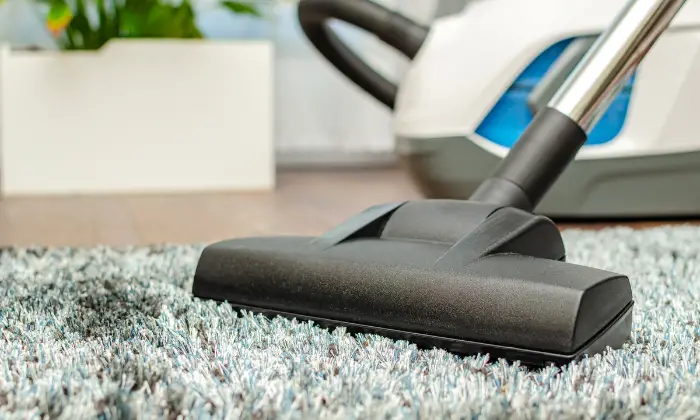
Is your vacuum cleaner giving you a headache instead of cleaning your house? Well, fret not! This detailed guide will teach you how to fix a vacuum cleaner with no suction, and you’ll be back to having a spotless home in no time.
Let’s dive right in!
How to Fix a Vacuum Cleaner with No Suction

1. Identify the Culprit: Why is There No Suction?
A. Clogged Filters
Dirty or clogged filters are a common reason for a vacuum cleaner losing suction. Check your vacuum filters & clean or replace them as needed.
B. Blocked Air Pathways
Inspect the hoses, tubes, and other air pathways for any obstructions. Remove any debris or clogs you find.
2. Investigate the Vacuum Bag or Dustbin
A. Empty the Bag or Dustbin
An overly full vacuum bag or dustbin can reduce suction. Empty it and see if the suction improves.
B. Inspect the Bag or Dustbin for Damage
Check the bag or dustbin for any holes or cracks, which could cause air leaks and reduced suction.
3. Check the Vacuum Belt
A worn or broken vacuum belt can lead to reduced suction. Inspect the belt and replace it if needed.
4. Examine the Brush Roll
A. Clean the Brush Roll
Hair and debris around the brush roll can impede its rotation, affecting suction. Clean the brush roll thoroughly.
B. Assess the Brush Roll for Wear and Tear
If the brush roll is worn or damaged, it may need to be replaced.
5. Investigate the Motor
A. Listen for Unusual Noises
If your vacuum’s motor makes odd noises, it could malfunction and affect the suction. if you want to learn more about what sound does a vacuum cleaner make and how to prevent it read our blog about it.
B. Inspect the Motor for Damage
Inspect the motor for wear, damage, or debris buildup.
6. Seek Professional Help
If all else fails, consult a vacuum cleaner repair specialist.

FAQs
Q: Why is there no suction in my vacuum?
There could be several reasons for a lack of suction in your vacuum cleaner. Common causes include clogged filters, blocked air pathways, full vacuum bags or dustbins, damaged vacuum belts, or malfunctioning motors.
To identify and fix the issue, follow the troubleshooting steps provided in this guide.
Q: What makes a vacuum have suction?
A vacuum cleaner’s suction is created by its motor, which drives a fan to generate airflow. This airflow makes a pressure difference, with lower pressure inside the vacuum and higher pressure outside.
This pressure difference allows the vacuum cleaner to pick up dirt and debris from surfaces.
To maintain optimal suction, it’s essential to keep your vacuum cleaner well-maintained by regularly cleaning or replacing filters, emptying the bag or dustbin, and checking for clogs or debris.
Q: What are the most common reasons a vacuum cleaner loses suction?
Clogged filters, blocked air pathways, full vacuum bags or dustbins, and damaged vacuum belts are common culprits.
Q: How often should I clean or replace my vacuum filters?
Most manufacturers recommend cleaning or replacing filters every 3-6 months, but it depends on usage and the specific vacuum model. Check your owner’s manual for guidance.
Q: Why is my vacuum making loud noises?
Loud noises indicate a damaged motor, clogged air pathways, or a malfunctioning brush roll. Inspect these components and address any issues you find. if you want to learn more about what sound does a vacuum cleaner make and how to prevent it read our blog about it
Q: Can I fix my vacuum cleaner or hire a professional?
Many common vacuum cleaner issues can be fixed with simple DIY solutions. However, consult a professional if you need clarification or the problem is complex.
Q: How can I maintain my vacuum cleaner to prevent loss of suction?
Regular maintenance, such as cleaning filters, emptying the bag or dustbin, and checking for clogs or debris, can help prevent suction loss.
Q: How do I know if vacuum cleaner’s motor is damaged?
Unusual noises, reduced suction, and visual signs of wear or damage could indicate a damaged motor. Consult a professional for further evaluation.
Conclusion
Understanding how to fix a vacuum cleaner with no suction can save you time, money, and frustration. By adhering to the troubleshooting measures detailed in this guide, you can effectively address typical problems with your vacuum cleaner.
Regular maintenance is critical to keeping your vacuum cleaner in optimal condition and ensuring it provides the suction power you need for a clean and healthy living space.
And there you have it! We hope this comprehensive guide on how to fix a vacuum cleaner with no suction has been helpful. With some effort and handy know-how, you’ll be well on your way to restoring your vacuum cleaner to its former glory. Happy cleaning!
Feel free to follow us on Linkedin: LinkedIn Scroll stopper





